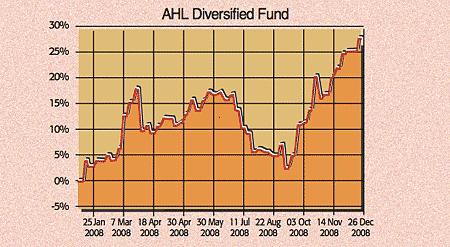
The knives are out for hedge funds. After making a healthy profit from shorting bank shares, four hedge-fund managers were brought before the Treasury Select Committee. It seems that making lots of money for their investors needed some sort of explanation. Quite why this is the case, isn’t clear, given that senior bankers such as RBS’s Sir Fred Goodwin got away with huge value destruction without so much as an apology.
Perhaps profitable hedge funds instantly raise suspicions these days. Last year, the average fund lost 18.3%, according to Hedge Fund Research – the worst annual performance since 1990. That might not sound bad when compared with the 37% drop for the S&P 500. But when fees are commonly 20% of profits, it’s not good enough.
Investors have twigged that the hedge-fund claim to provide “uncorrelated returns” is often flawed. They were supposed to make money in any market – bull or bear – by investing in a wide range of assets and using a variety of exotic strategies. But as the number of hedge funds has soared (from a couple of hundred in the early 1990s to over 7,000 today), niche opportunities to make money have dried up. Many have become little more than heavily indebted, high-cost variants of a standard fund.
Luckily not every hedge fund strategy is looking poorly. Tim Price of PFP Wealth Management likes the “Systematic Trend” funds, which returned 9.8% last year. Their strategies are heavily computer-model driven and involve taking bets on long-term trends such as the direction of the oil price. Price recommends AHL Diversified, up 30% in 2008, and Whinton Futures, which returned around 20%. AHL (Maninvestments.com) has a minimum investment of $30,000, while Whinton has an eye-popping minimum investment of $1m. But you can access it using the Matrix Group in London (020-3206 7000), via a product called ‘Ascension’. Its minimum investment is £50,000.